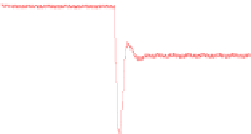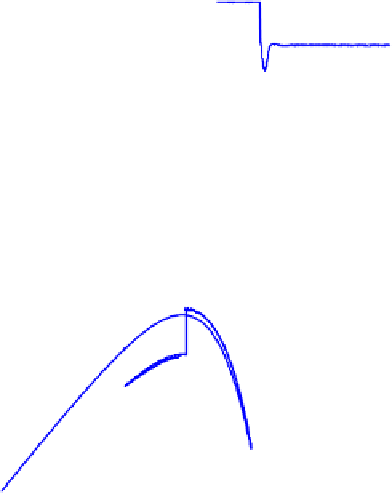Information Technology Reference
In-Depth Information
PSC. For the slightly PSC, the bypassed diodes will not work and the output current
of the series circuit is equal to the PV output current. While for the heavy PSC, the
bypass diodes will connected to the circuit, the output current is equal to the PV
output current under no PSC. Figure 5-7 are the waveforms under slightly PSC.
Figure 5 is the PV output voltage waveform under PSC. From the figure, it can be
seen that the output voltage and the current has dropped under the PSC. On this
condition, the bypass diodes do not work, because the PV source can provide current
to the load, so the output voltage is not zero. Figure 6 is the output power under PSC.
Figure 7 is the
P
-
V
waveform to realize MPPT. From the figure, it can be seen that the
Boost converter can realize MPPT (above 680W) under normal condition, that is,
without PSC. If under PSC, the current and voltage will all drop under PSC point. But
the MPPT can be realized also (above 500W).
800
6
100
600
4
400
50
2
200
0
0
0
0.002
0.006
0.01
0.014
0.018
0.002
0.002
0.006
0.006
0.01
0.01
0.014
0.014
0.018
0.018
Time(S)
Time(S)
Fig. 5.
V and I waveforms under PSC
Fig. 6.
Output power under PSC
800
700
600
500
400
300
200
100
0
0
50
100
150
200
250
Fig. 7.
P-V curve for realizing MPPT under PSC
U(V)
Figure 8-10 are the waveforms under heavier PSC. Figure 8 showed that current
is not zero, as for the bypass diodes are on, so the source voltage is zero. Figure 9 is
the output power under PSC. From the figure, it can be seen that the output power
drop quickly at the PSC point. But under the proposed method in the paper, the PV























































































































































































Search WWH ::

Custom Search